Lactarius camphoratus – Eastern Candy caps
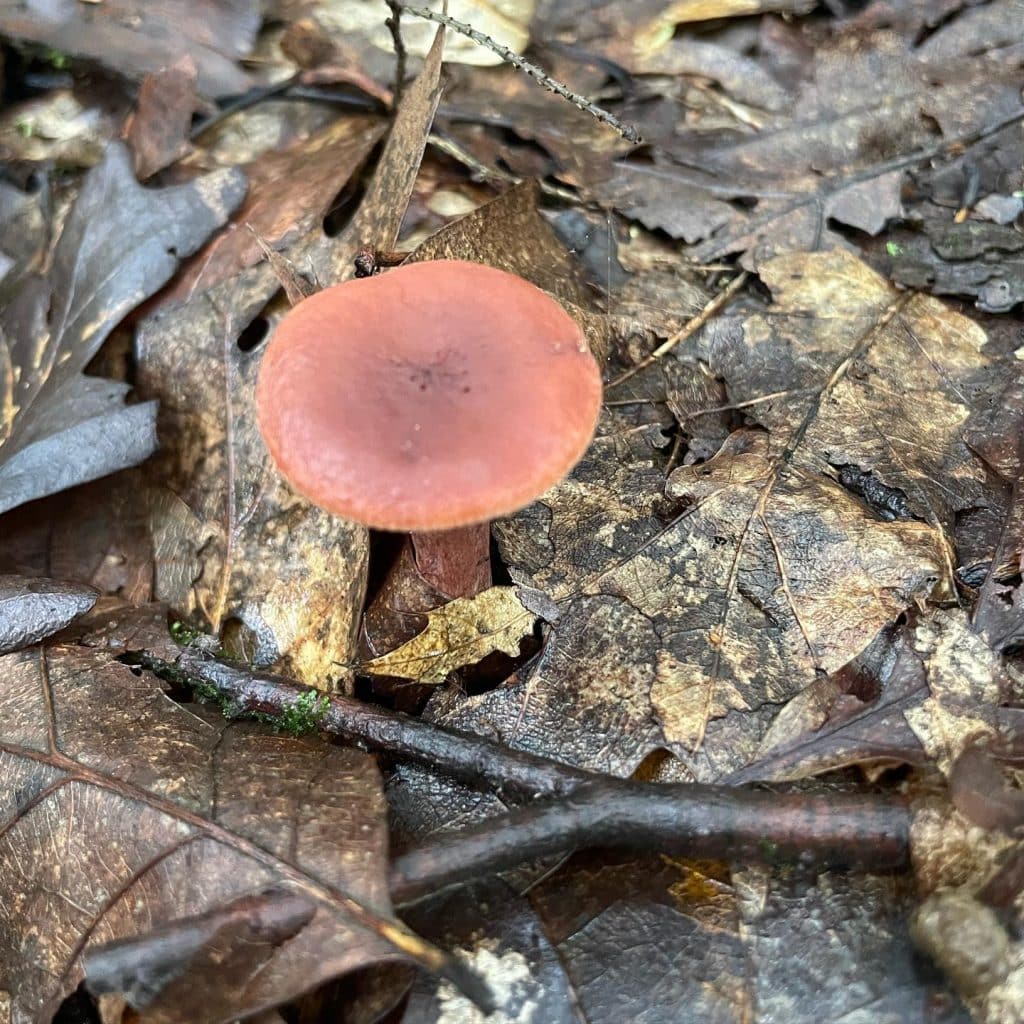
Eastern candy caps (Lactarius camphoratus) are edible milkcaps found in Europe and Eastern North America. The species found in Eastern North America may or may not be the same species as the one found in Europe, but they are currently both classified as Lactarius camphoratus. There are multiple species of mushrooms referred to by the […]
Meripilus sumstinei – Black-staining Polypore
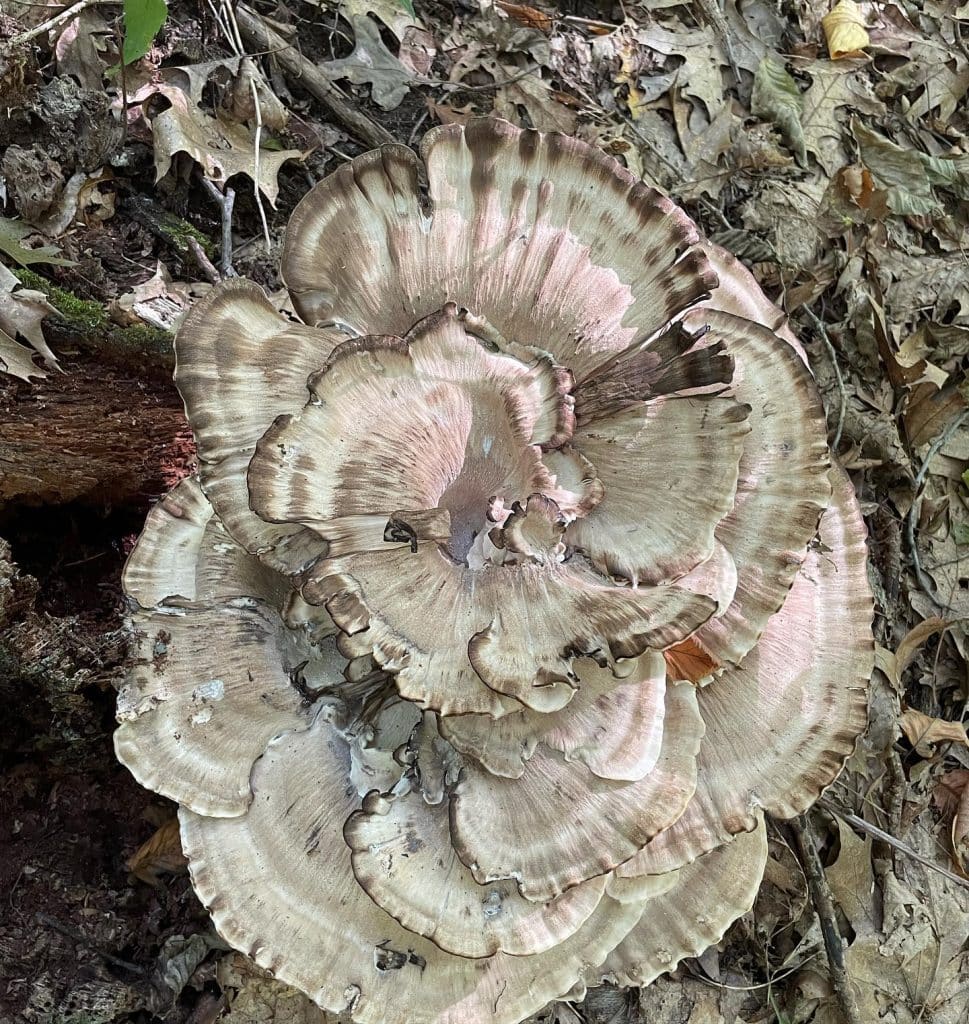
The Black-staining polypore (Meripilus sumstinei) is an edible mushroom that is often confused for Hen-of-the-woods. It can be found growing at the base of deciduous trees, usually oaks, from July-September. The Black-staining polypore has grayish-white caps that stain black when touched or cut. When young, the pore surface is white. The smell is reminiscent […]
Hypsizygus ulmarius – Elm Oysters
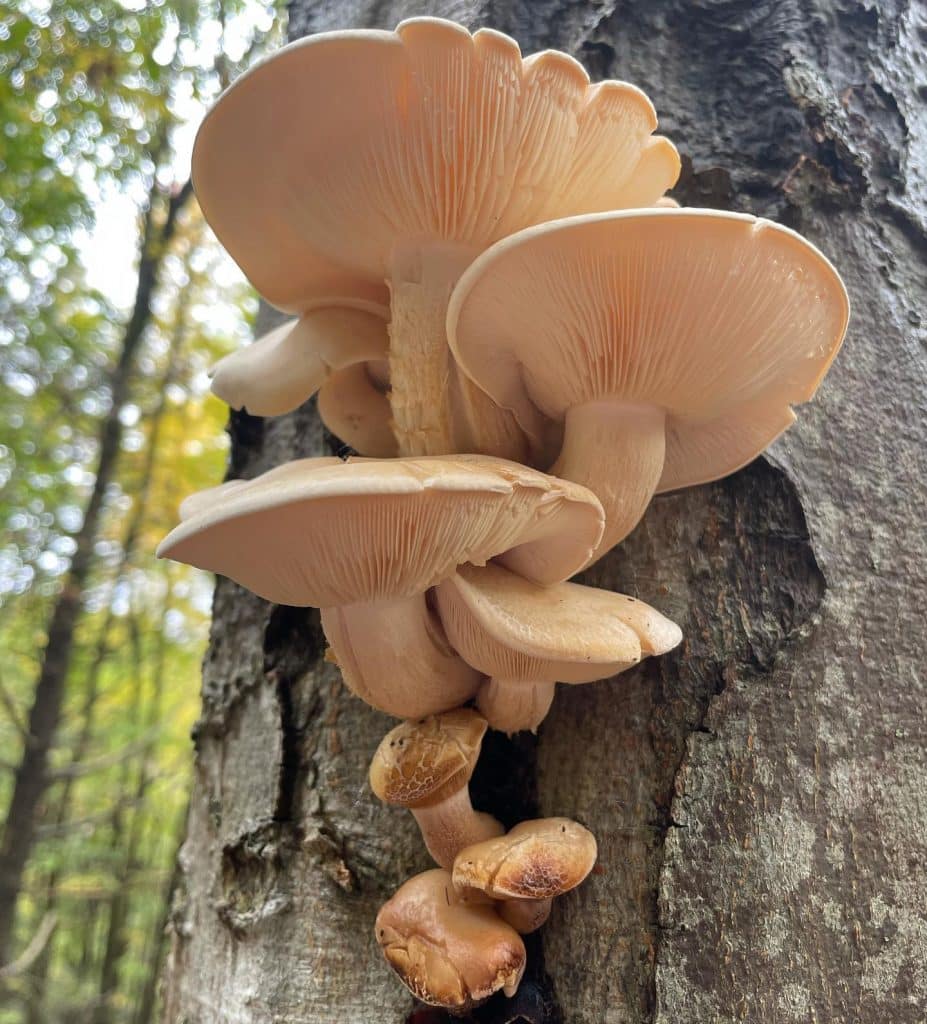
Elm oysters (Hypsizygus ulmarius) are an edible and easy-to-identify mushroom. Elm oysters are in a different genus than the “true” oyster mushrooms. They are named after their appearance which resembles true oyster mushrooms in the Pleurotus genus. Elm oysters are usually found on elm trees from August-December. They can be differentiated from true oysters by […]
Dacrymyces chrysospermus – Orange Jelly Fungus
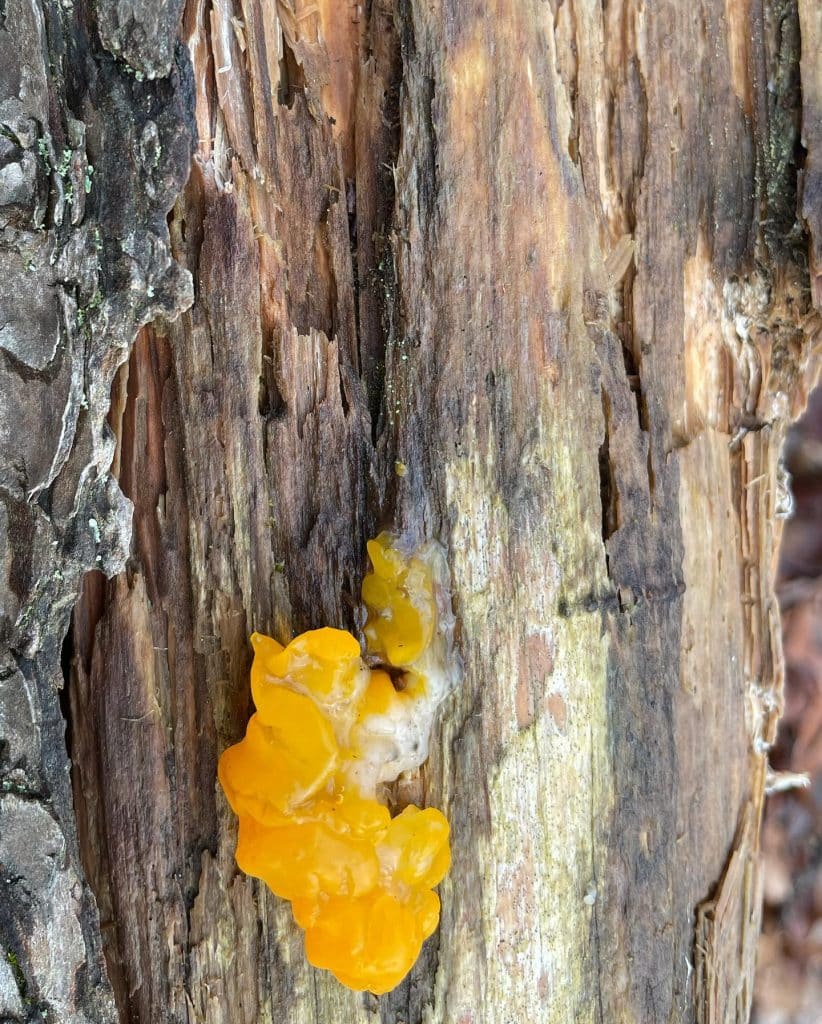
Orange Jelly Fungus (Dacrymyces chrysospermus) is an edible mushroom that can be found year-round after heavy rains. Orange jelly fungus is found on conifers, often where bark is peeling off. It has a white base where the cap attaches to the wood. Orange jelly fungus is most often confused with Witches butter (Tremella mesenterica) which […]
Auricularia spp. – Wood Ears
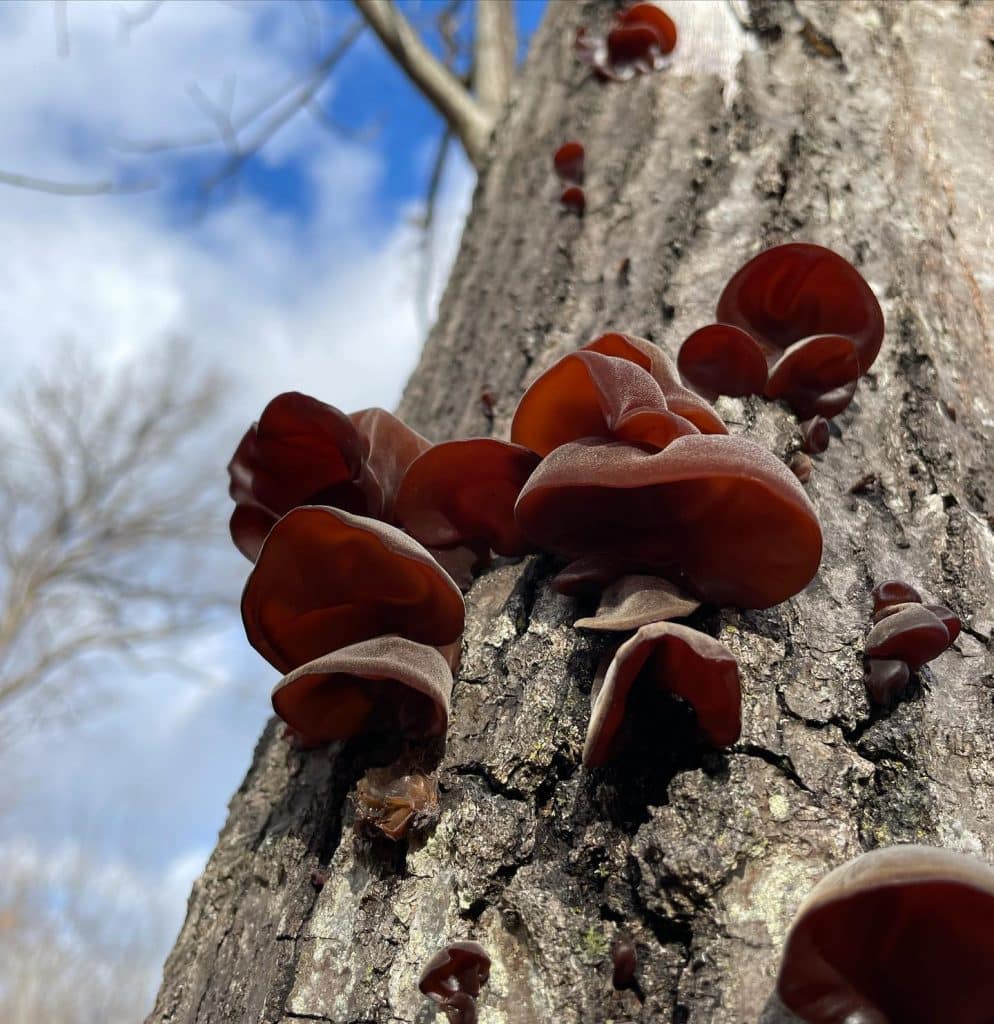
Wood ears (Auricularia spp.) are edible jelly fungi that are commonly eaten in Asia. It is best to search for them the day after a large rainfall. Wood ears prefer cooler weather but could appear any time of the year. There are two wood ear species that grow in Connecticut. Auricularia americana grows on conifers, […]
Cryptoporus volvatus – Veiled Polypore
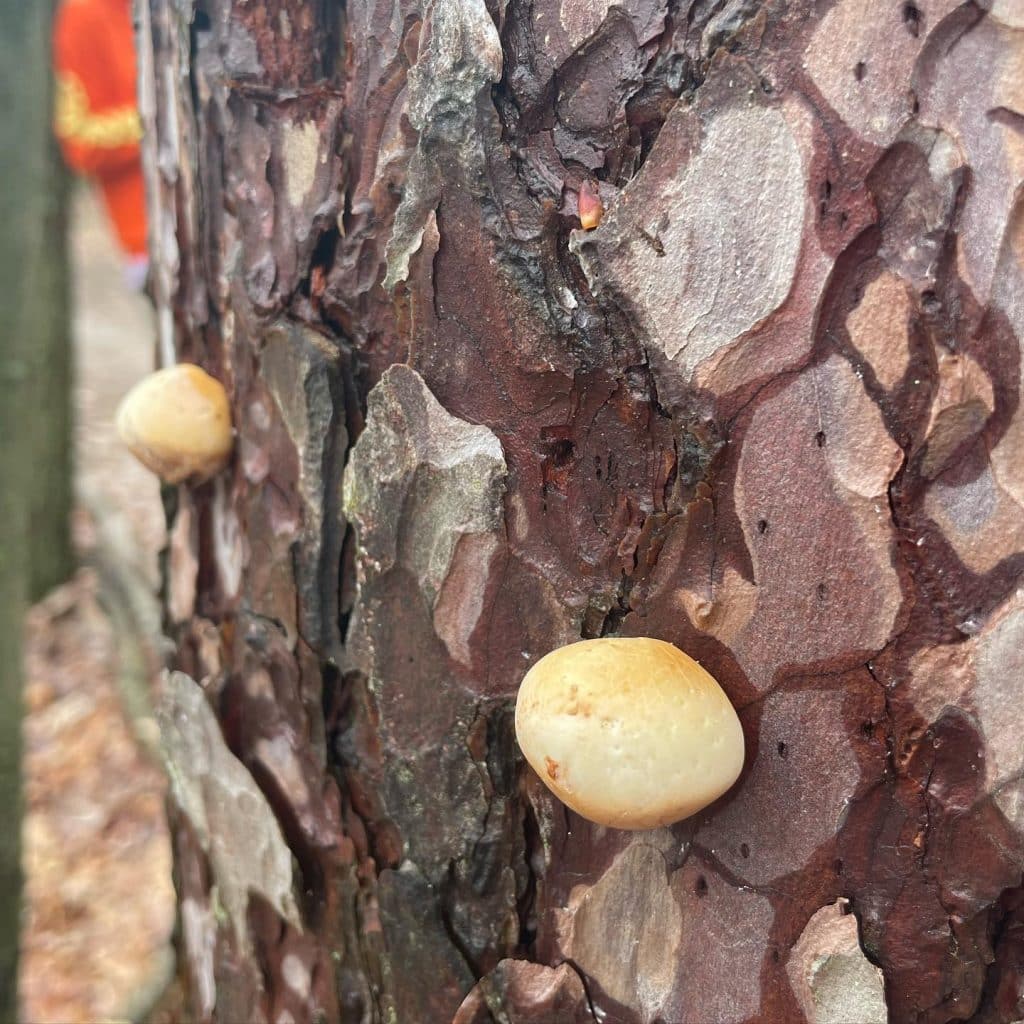
The Veiled Polypore (Cryptoporus volvatus) is a rare mushroom that grows on conifer trees. The pored surface is “veiled” by a thin, rounded layer of tissue. This allows the spores to pile up in the mushroom. When beetles enter the space, they are dusted with the spores and will therefore carry the spores into the […]
Stropharia rugosoannulata – Wine Caps
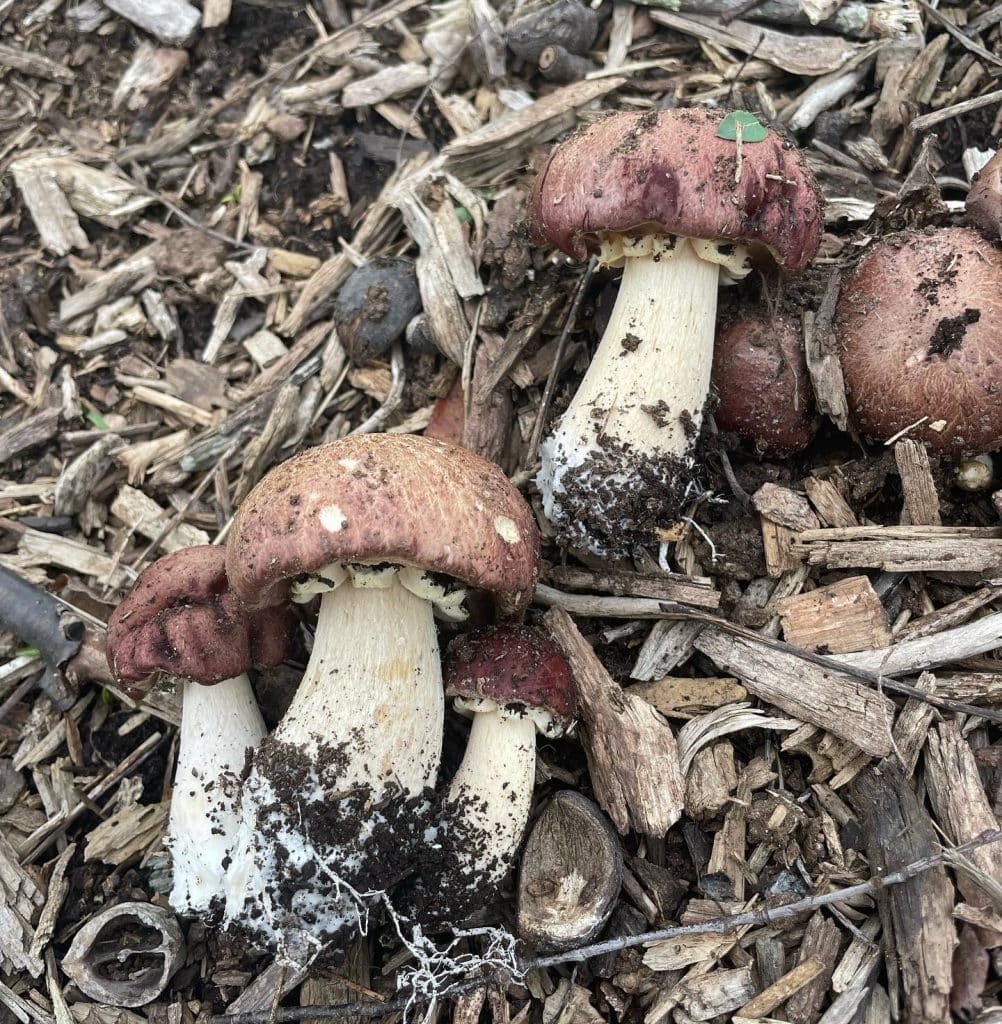
Wine Caps (Stropharia rugosoannulata) are a commonly cultivated mushroom that can be found throughout North America. Wine caps can be identified by their red cap which fades to brown as they age. Gills will be pale gray when the mushrooms are young, becoming purple-black as they age. They have a white veil which will be […]
Cerioporus squamosus – Dryad’s Saddle
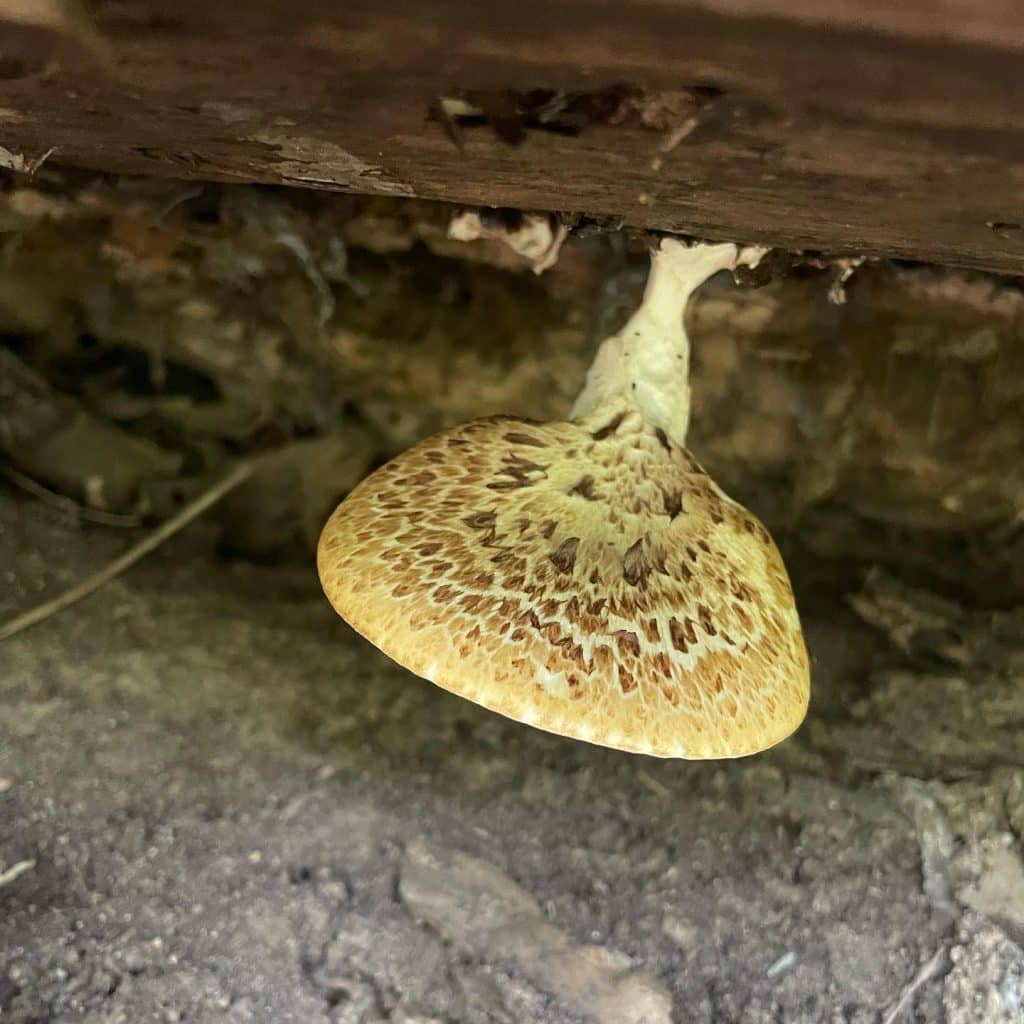
Dryad’s Saddle (Cerioporus squamosus) is a choice edible mushroom when found young. Dryad’s saddle, or Pheasant back, can be found in the spring and fall, fruiting on dead or dying hardwood trees. Look for the fungus 1-2 days after a heavy rain. The mushroom is parasitic, causing white rot disease to the tree. Dryad’s saddle […]
Ganoderma tsugae – Hemlock Reishi
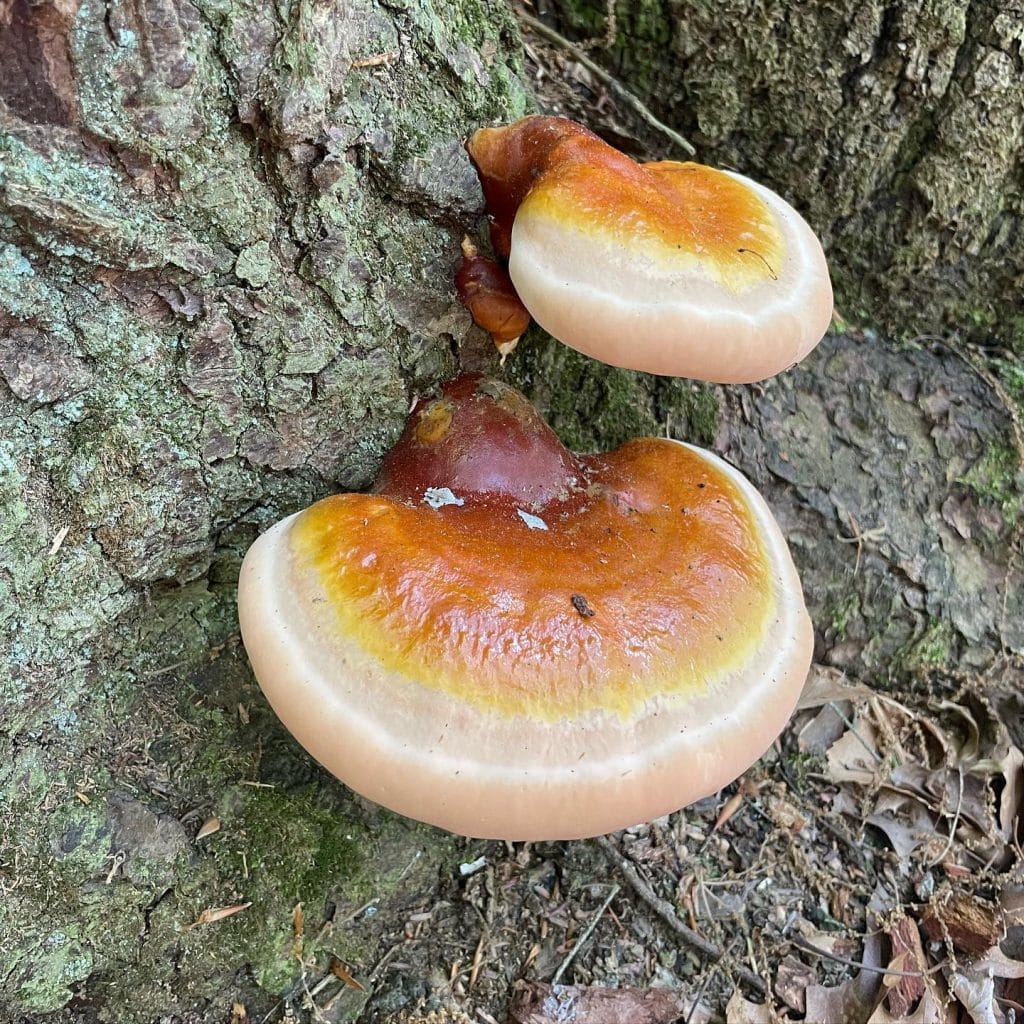
Reishi mushrooms have been used medicinally in Asia for over 2,000 years. Hemlock reishi (Ganoderma tsugae) fruit in New England from May-June. Hemlock reishi are most often found on dead or dying Eastern Hemlock trees. They like to grow near running water. Reishi are known as the “Mushroom of Immortality”. They can be used medicinally […]
Bondarzewia berkeleyi – Berkeley’s Polypore
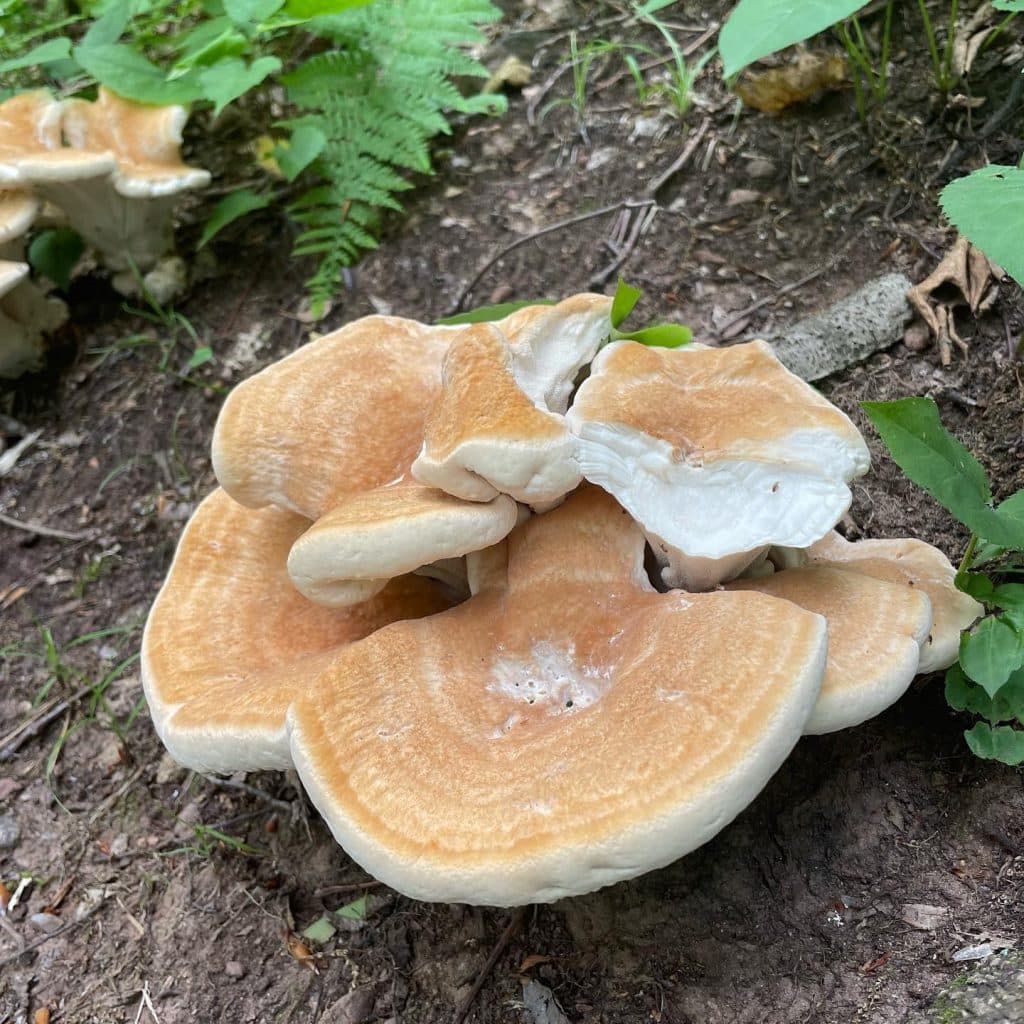
Berkeley’s Polypore (Bondarzewia berkeleyi) is a mushroom that can be found at the base of hardwood trees in the summer and early fall. Berkeley’s polypore usually causes parasitic butt rot to the hardwood tree that it grows next to. It will occasionally be found at the base of dead or dying trees, acting as […]
Coprinellus micaceus – Mica caps
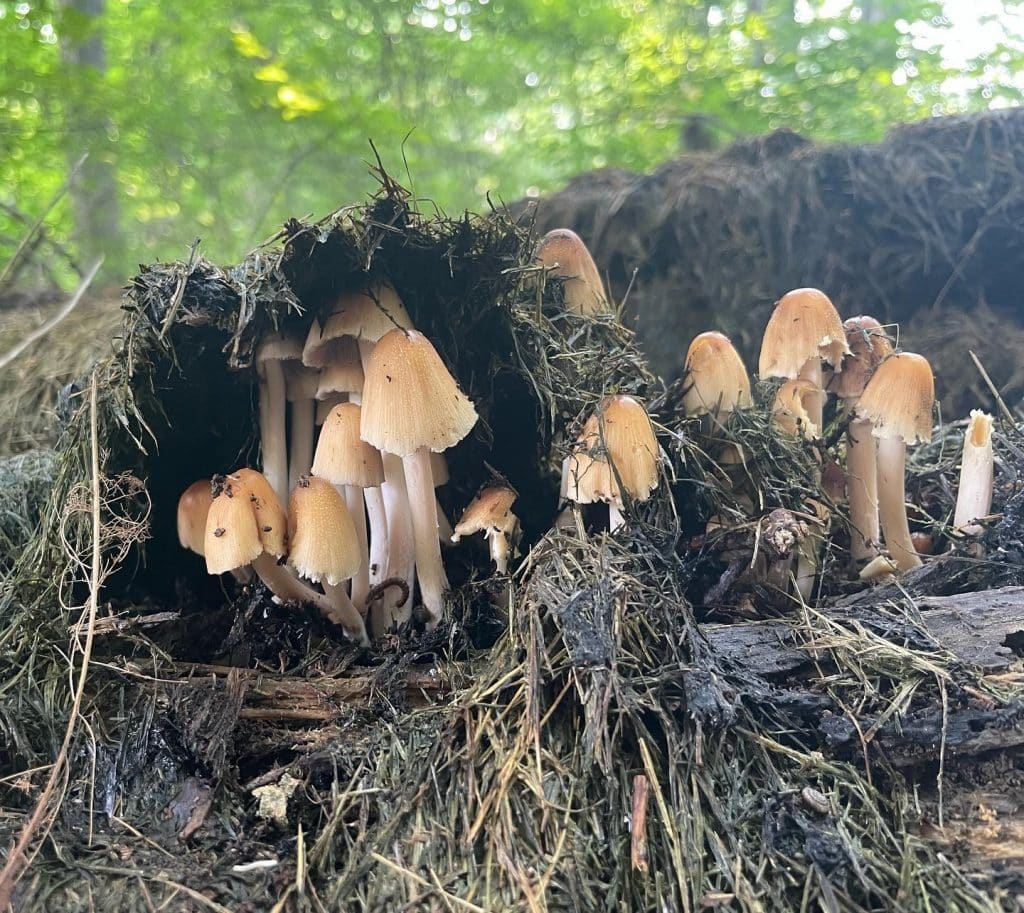
Mica caps (Coprinellus micaceus) are a common saprobic mushroom found growing in clusters on wood debris and stumps. Mica caps fruit spring to autumn throughout North America and Europe. They can be identified by their brown caps which are coated with mica-like granules. The caps become inky when they start to release spores. Mica caps […]
Cantharellus lateritius – Smooth Chanterelles
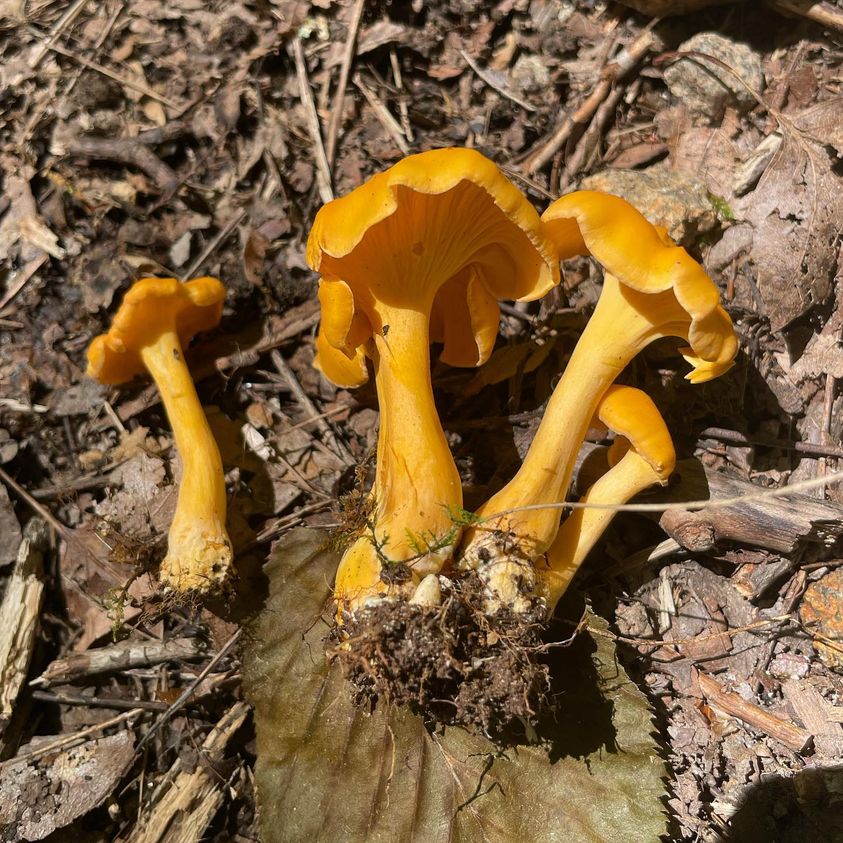
Smooth Chanterelles (Cantharellus lateritius) are a type of chanterelle that sometimes lacks the wrinkles, or false gills, under its cap. Chanterelles are a summer mushroom that can be found after consistent rains and humid weather. Chanterelles grow in soil, often near water and along walking paths. The mushroom uniquely has the same color across the […]
Cantherellus cinnabarinus – Cinnabar Chanterelles
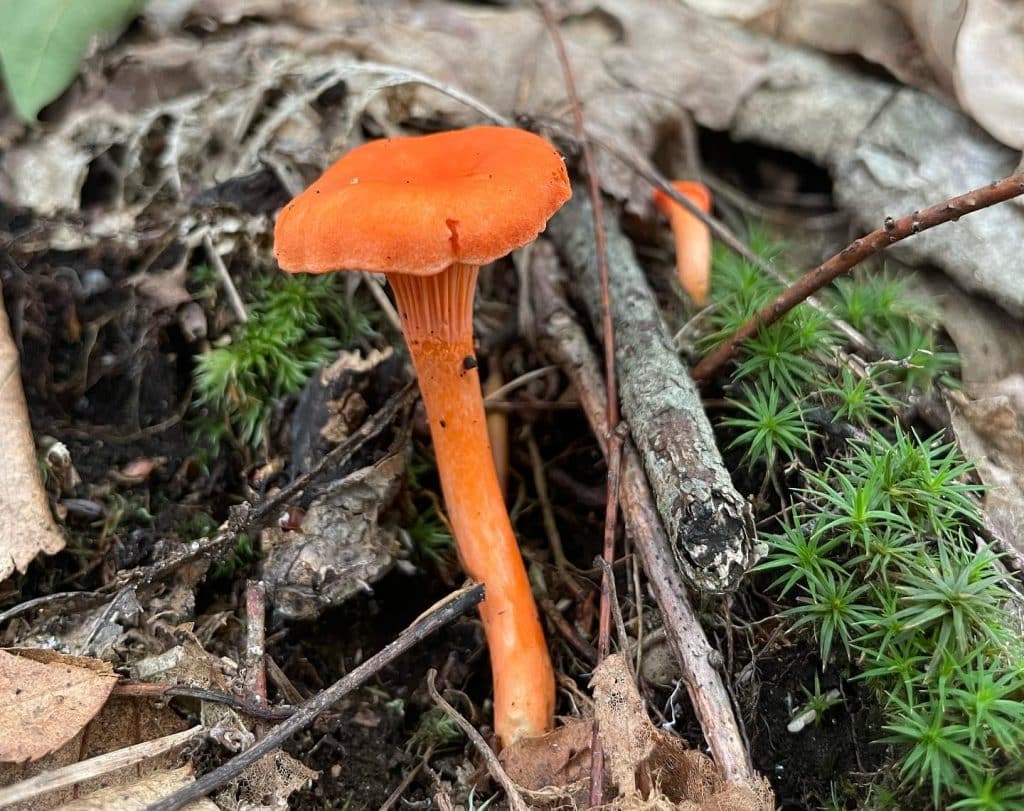
Cinnabar chanterelles (Cantherellus cinnabarinus) are a common choice edible mushroom that can be found in the summer months in New England. Cinnabar chanterelles can be identified by their uniform reddish-orange color, vase shape, and forked ridges under the cap that run down the stem. Cinnabar chanterelles have a firm texture, somewhat like string cheese. They […]
Boletus separans – Lilac Bolete
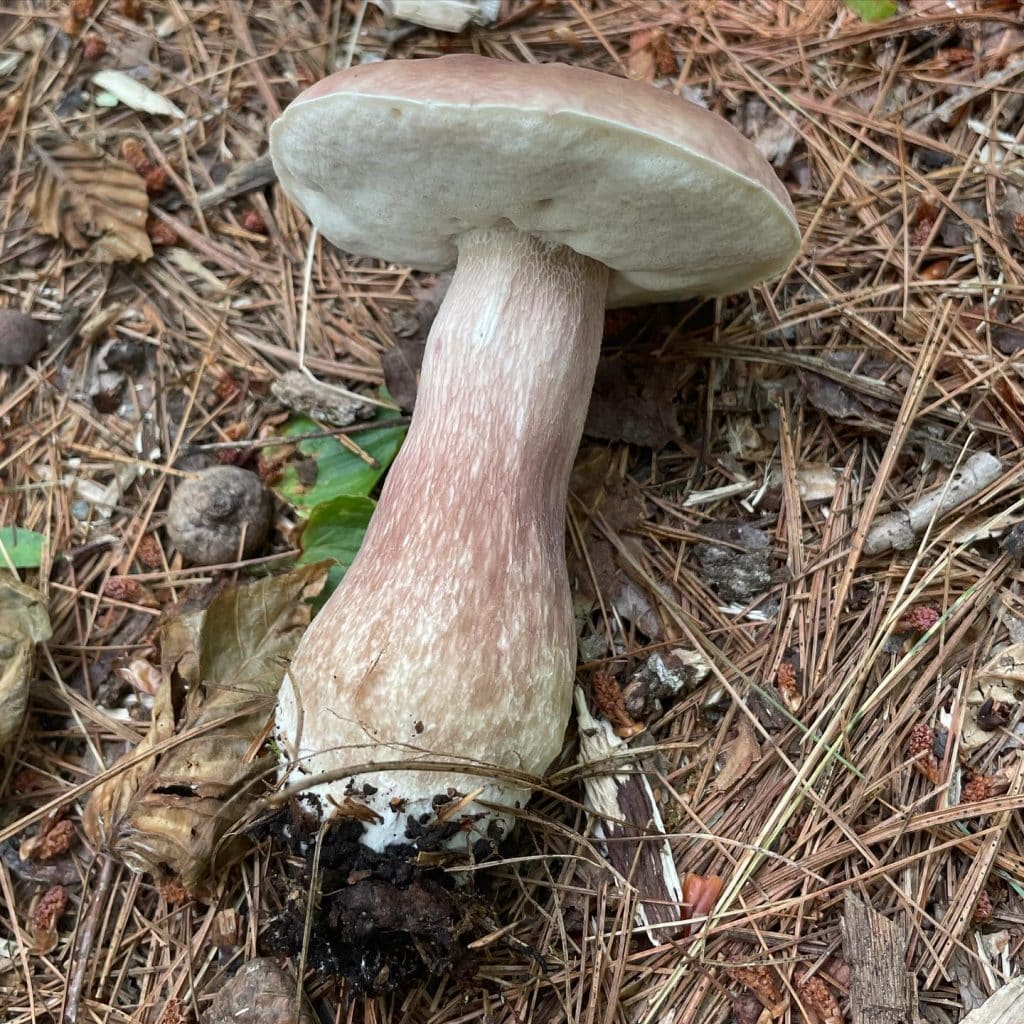
The Lilac Bolete (Boletus separans) is a choice edible mushroom related to the King Bolete (Boletus edulis). Lilac boletes can be found in eastern North America from July-September. They have a mycorrhizal relationship with hardwood trees, especially red oaks. Lilac boletes can be identified by their purplish stalk with white reticulation (netting). Cap color varies […]
Gyroporus castaneus – Chestnut Bolete
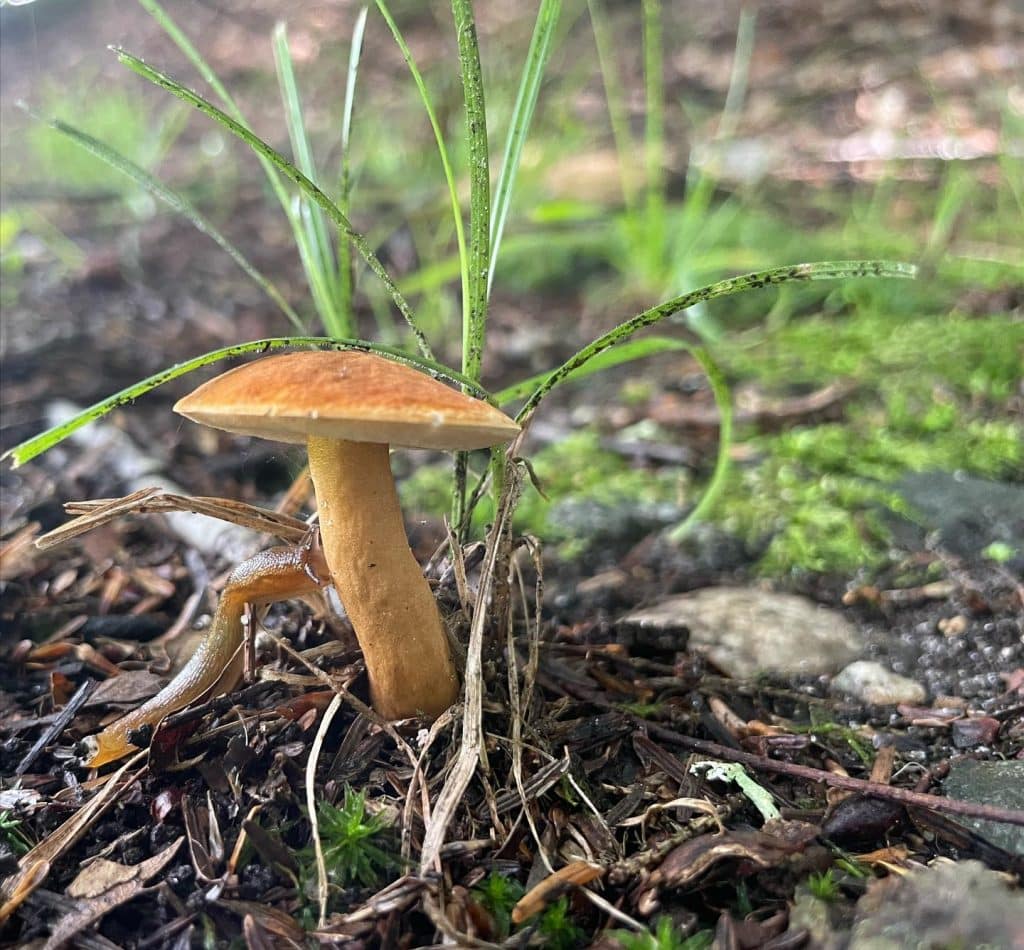
The Chestnut Bolete (Gyroporus castaneus) is an edible mushroom that can be found fruiting summer to fall. The chestnut bolete can be found in Europe and eastern North America. It grows singly or in small groups near hardwood trees, often oak and sweet chestnut. It is unclear if the mushroom has a mycorrhizal or saprobic […]
Russula parvovirescens – Quilted Green Russula
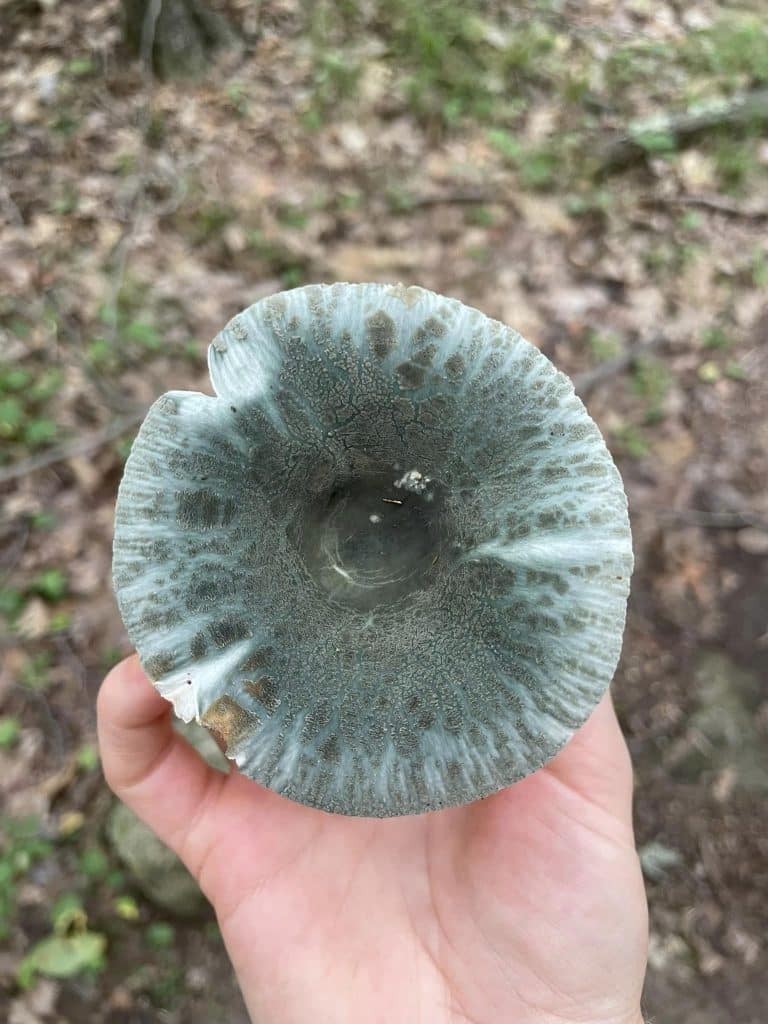
The Quilted Green Russula (Russula parvovirescens) is an edible mushroom that can be found in the Eastern United States. It was separated from the Russula virescens species in 2006. Quilted Green Russulas are found most abundantly July-August in forested areas. They are mycorrhizal with hardwood trees and occasionally conifers. It’s most commonly associated with oak […]
Pleurotus ostreatus – Winter Oysters
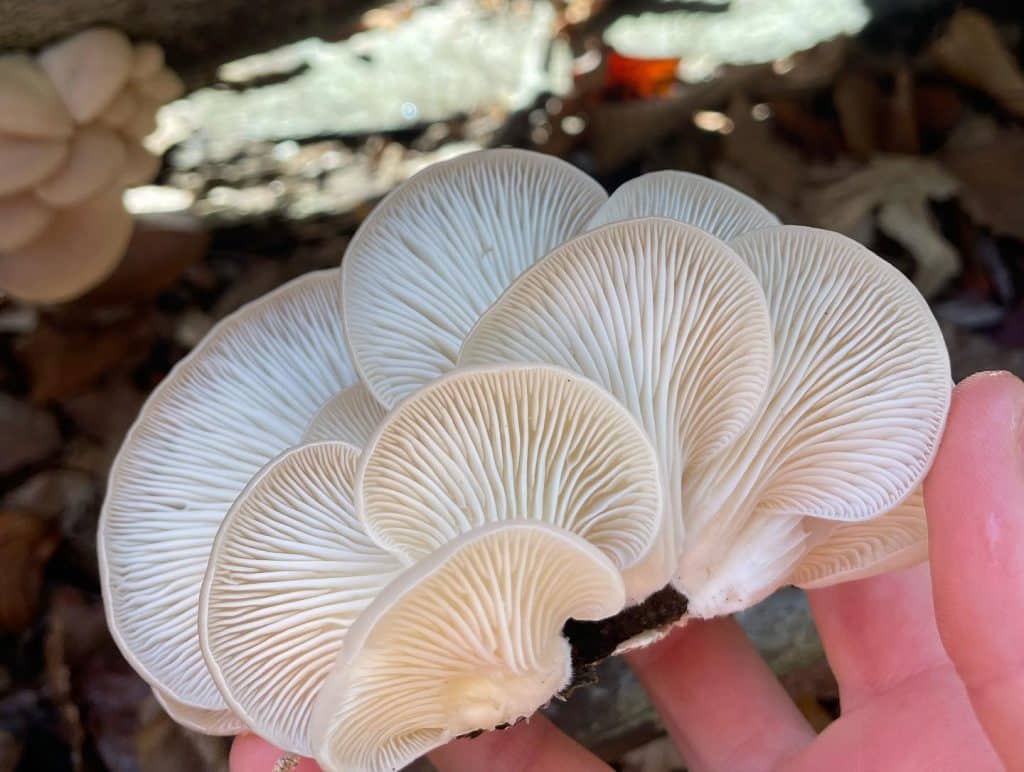
The Winter oyster mushroom (Pleurotus ostreatus) is the most commonly cultivated mushroom, but is also commonly found in the wild. Winter oysters, or Pearl oysters, can be identified by their tan cap, stubby off-center stem, and decurrent gills. Winter oysters tend to have a darker cap and grow larger than the summer oyster species (Pleurotus […]
Hydnum spp. – Hedgehogs
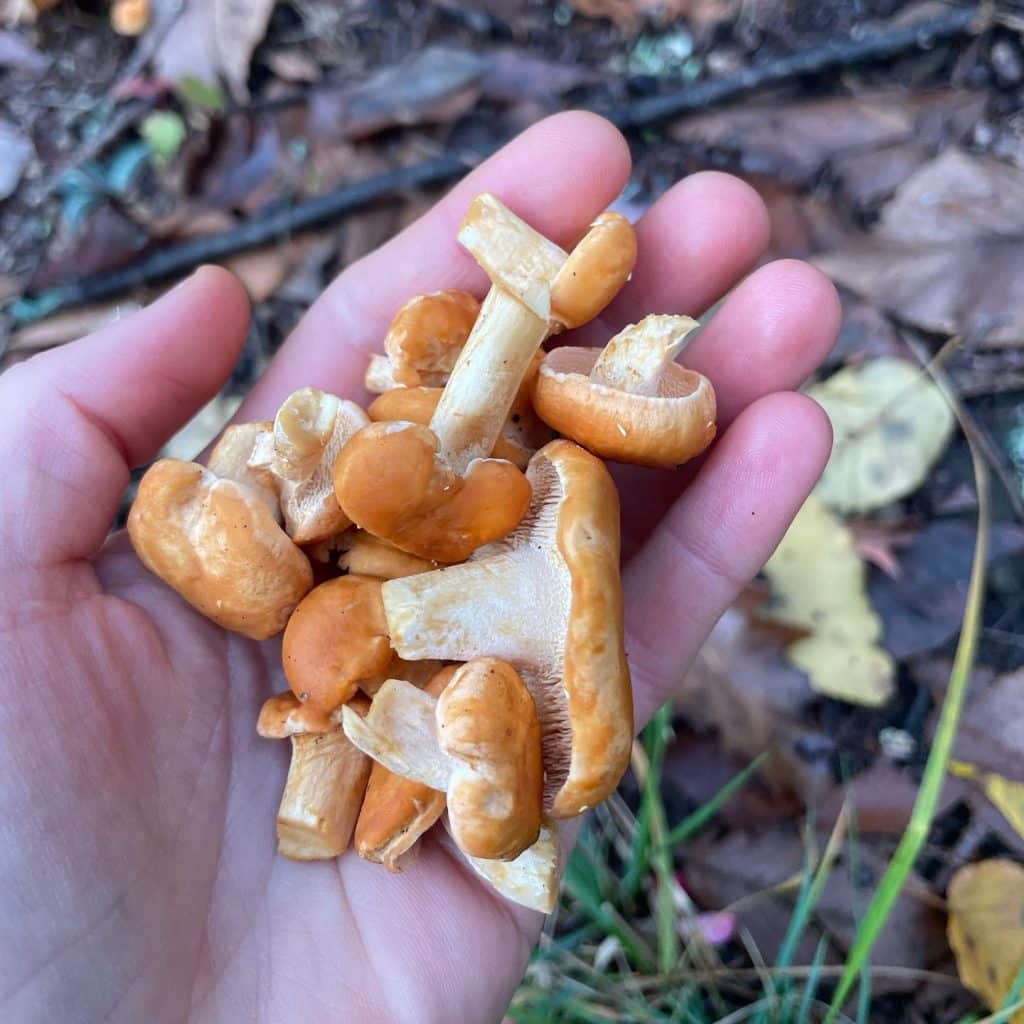
Hedgehogs (Hydnum spp.) are a group of 49 mushrooms in the Hydnum genus that are all considered edible. Hedgehogs can be found in New England from July-November. Hedgehogs are easily identified by their orange color and teeth under their cap. Hedgehogs can be found growing in groups in moss and leaf litter. They grow symbiotically […]
Fomitopsis betulina – Birch Polypore
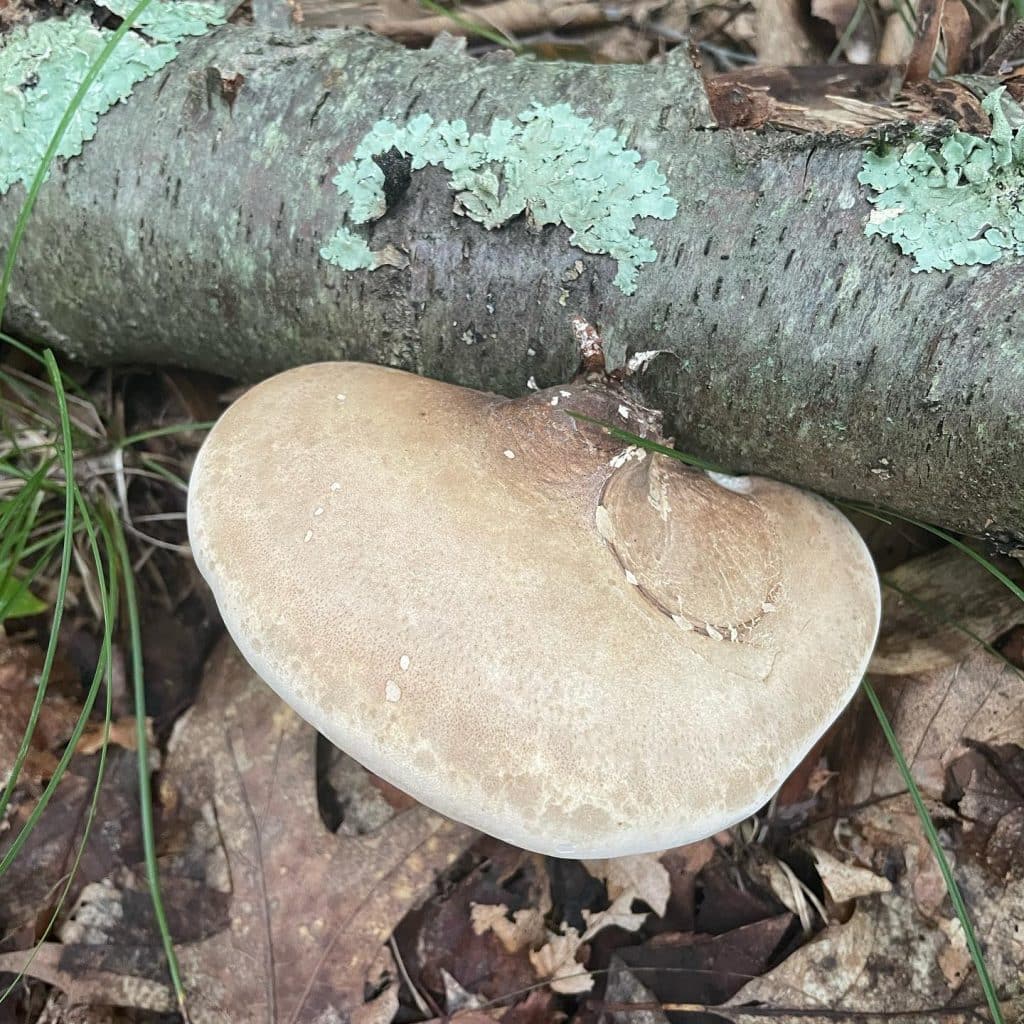
The Birch Polypore (Fomitopsis betulina) is a medicinal mushroom that has been used for thousands of years. The birch polypore was found on Otzi the iceman, whose body was found in the Italian alps from 5,000 years ago. It is thought that Otzi was using the mushroom to treat the intestinal parasites that he had. […]
Ischnoderma resinosum – Resinous Polypore
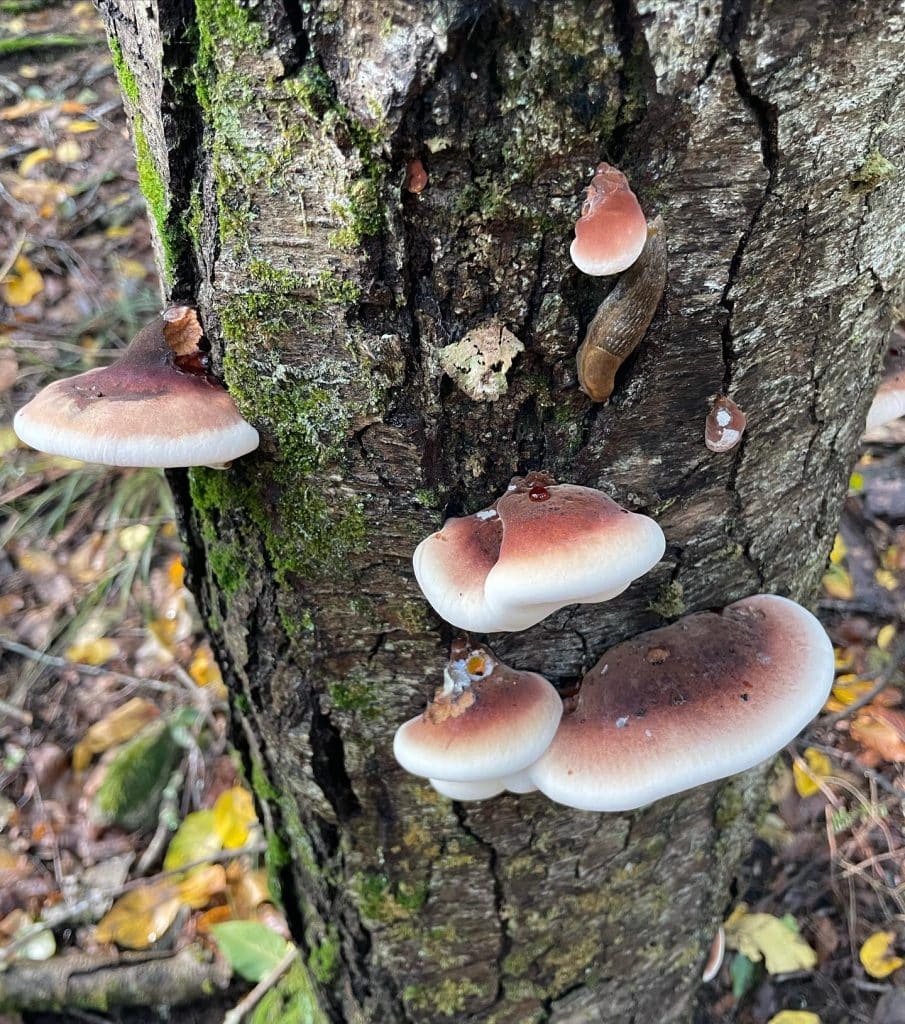
The Resinous polypore (Ischnoderma resinosum) is a saprobic fungus that can be found on fallen hardwoods from September until the first hard frost. The resinous polypore is thick and fleshy when young with a pale brown cap and thick white margins. The mushroom toughens and the cap becomes a darker brown with age. The cap […]
